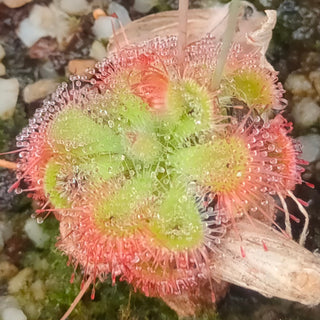Eriophorum angustifolium
COTTON GRASS
- Unit price
- / per
This cotton grass is a part of the sedge family, grows in acidic, marshy areas. The flower heads grow well above the leaves, forming tufts with a cotton-like appearance. Typically starts to flower in June and will continue to flower till Frost. Typically clump forming, it can spread, creating more clumps as the plants mature.
Type: Hardy perennial
Hardiness zones: 3-7
Height: 40cm, 16"
Location: Sun
Seeds per packet: 25
Sow just under the surface of the soil and water in. Leave them at room temperature for 4 weeks. This helps break the phytohormones which inhibit germination. They will not grow yet. Then a cooling period is required. Cover them with plastic and place in a fridge for 6 weeks. Be sure they stay moist. After the cold stratification period they are then brought back to a cool room (15-18°C, 59-68°F) for them to germinate. Germination can be erratic, generally 30-90 days after the warming period, though some can take longer.
Eriophorum angustifolium
COTTON GRASS
- Unit price
- / per
Multiple secure payment options available.
Adding product to your cart
You may also like
This cotton grass is a part of the sedge family, grows in acidic, marshy areas. The flower heads grow well above the leaves, forming tufts with a cotton-like appearance. Typically starts to flower in June and will continue to flower till Frost. Typically clump forming, it can spread, creating more clumps as the plants mature.
Type: Hardy perennial
Hardiness zones: 3-7
Height: 40cm, 16"
Location: Sun
Seeds per packet: 25
Sow just under the surface of the soil and water in. Leave them at room temperature for 4 weeks. This helps break the phytohormones which inhibit germination. They will not grow yet. Then a cooling period is required. Cover them with plastic and place in a fridge for 6 weeks. Be sure they stay moist. After the cold stratification period they are then brought back to a cool room (15-18°C, 59-68°F) for them to germinate. Germination can be erratic, generally 30-90 days after the warming period, though some can take longer.


















































